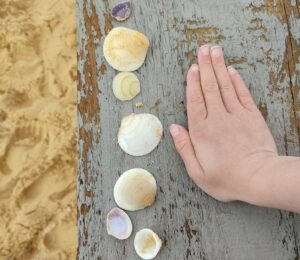The Sensory System and Occupational Therapy
Autistic kids have different sensory systems. So, what does that mean?
For autistic kids, the experience of sound, sight, touch, balance, smell and taste is often different. This plays out in a number of ways. For example, autistic kids can be slowed down by distractions in their environment, like clutter. It might mean they have unusual cravings. A low tolerance for some sensory experiences might activate their fight/flight/freeze response, which slows learning (because no one learns well when they are scared, preparing to punch someone or suffering).
There is huge variety around sensory sensitivities and how autistic kids cope with them, which is why you won’t ever meet a child exactly like yours. Autistic kids are sometimes grouped as sensory seekers or bystanders. The seekers know how to meet their quirky need, so you’ll see them flapping their arms or licking a steel pole or eating chillies (or whatever they need to do). In contrast, the bystanders don’t actively meet their needs and might “melt down” until the need is met. This is the really challenging, code cracking part of life for parents with profoundly autistic kids. These kids sometimes need a highly structured, sensory routine organised for them involving activities like stroking sensory toys or swinging or eating certain foods that calm them before they can learn. This is learned through careful observation and trial and error (with a lot of meltdowns in between).
A term you sometimes hear used is the ‘window of tolerance’. I think of the window as the environmental, physical and emotional conditions a child needs to be ready to learn and grow. For example, do you need to de-clutter, remove an annoying clock or change your manner of speech? Does the child need to process an emotion? For me, a lot of the work of a parent is working out what in the environment is stressing your child, trying to get your child into the window of tolerance and then stretching it a little bit more by exposing them to their stressors in manageable doses. Too much, too fast and the child melts down. Some days go better than others.
The great news is our sensory systems are constantly adjusting and, just like some kids overcome their fear of blood to become great nurses, autistic kids can adjust to their fears and work around them to live meaningful lives.
Seeking out the support of an occupational therapist (OT) who has specialist knowledge of autism is an important step in helping your child. I recommend consulting OTs who use systems developed by Independent Listening Systems (iLs) as part of their therapeutic approach, and who take your child through a movement based program in addition to teaching you how to create accommodations in the family home like visual communication aids. I’ve included some fantastic programs below.
Resources and Programs
Example of a sensory questionnaire – https://sensorykids.ie/en/sensory-integration/sensory-integration-screening-questionnare/
“Everyday Games for Sensory Processing Disorder,” Barbara Sher – Google Books
“The Brain that Changes Itself,” Norman Doige – Google Books
The Extra Lesson – https://www.theextralesson.com/
Move Play Thrive – www.moveplaythrive.com
iLs – Integrated Listening Systems – integratedlistening.com.au